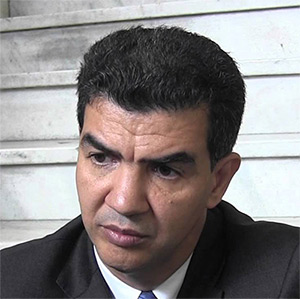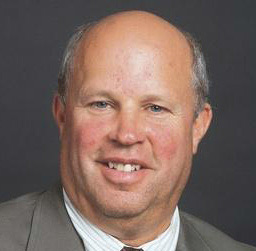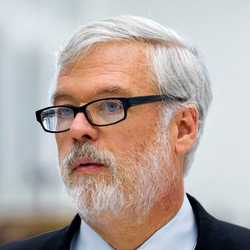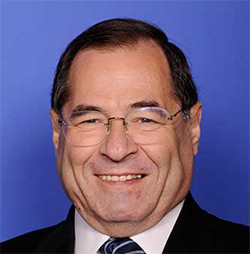New York City
Roundtable: Mass Transportation
Ydanis Rodriguez
Chairman, New York City Council Committee on Transportation
Q: How would you like to see transportation expanded to help New York City’s underserved areas? Are there realistic timelines on any of these projects?
YR: My top priority is to expand subway service to LaGuardia Airport. This is past due. With the $3.6 billion renovations set to begin on the central terminal, we must bring the transportation to and from the airport into the 21st century as well.

We must also capitalize on our waterways as a medium for transit. The East River ferry has been a welcome option for many commuters, and with high ridership on our subways and buses, we should look to ease crowding and connect disparate neighborhoods [that have] few public transit services available. These are larger projects with indefinite timelines, but I hope to get the ball rolling soon on both. In the interim, I wholeheartedly support Mayor de Blasio’s plan to expand select bus service— an efficient option that speeds up travel times on buses immensely.
Q: Now that New York City has the go to lower its speed limit, what else needs to be done to achieve the mayor’s Vision Zero goal?
YR: The city has already begun a productive ad campaign around Vision Zero, letting drivers know the dangers of high speeds and reckless driving. Once the limit is officially lowered, which we plan to accomplish in the coming months, I am confident this informational campaign will account for the change. Enforcement will be key in changing driver behavior, both with additional officers on our streets and with increased numbers of speed cameras granted by Albany this past session. We all have more work to do, however. I soon hope to pass legislation creating civil penalties for hit-and-run drivers, and will keep a focus on education and enforcement going forward.
Tom Prendergast
Chairman, Metropolitan Transportation Authority
Q: How far along is the MTA’s recovery from Sandy, and how will the transit system be shielded against future storms and climate change?

TP: It will take years to finish recovery work and restore the system to how it was the day before Sandy struck, and we have billions of dollars’ worth of work ahead to make our subways, trains and structures resilient against the rising threat of future storms.
The most visible sign of the MTA’s recovery effort has been the closure of the Montague Tube under the East River, which is being completely rebuilt to recover from inundation by millions of gallons of salt water. Other subway and vehicular tunnels also suffered severe damage to signal systems, power supplies, finishes and other vital elements. The MTA is designing solutions to fully prevent water incursion at more than 600 entry points like manholes and staircases in lower Manhattan, as well as at flood-prone yards, entrances and fan plants in low-lying areas across the network.
Q: What other plans are in the works to modernize MTA services?
TP: The biggest improvements subway customers have seen in recent years are the addition of countdown clocks in stations on the numbered lines and the L line, as well as the installation of cell-phone and Wi-Fi service in dozens of stations. As we continue to expand those initiatives through the entire subway system, we are looking for more ways to use technology to help our customers better understand and navigate the MTA network.
Every bus in the city is now equipped with MTA Bus Time, which tracks their location on their route. Customers can use computers, smartphones or text messages to know how far away their next bus is—so they can meet the bus instead of waiting for it.
Travel information kiosks have been installed in busy subway and commuter rail stations, offering maps, trip information and other services on large digital touchscreens. More than 150 Help Points have been installed in subway stations, which feature large blue lights atop buttons that can be pressed to immediately summon navigational help or police assistance.
The MTA’s Transportation Reinvention Commission, established at the suggestion of Gov. Andrew M. Cuomo, is studying other ideas for improving the mass transit network for the decades to come, and will make recommendations before the MTA submits its next five-year capital plan by the end of September.
Patrick Foye
Executive Director, Port Authority of New York and New Jersey
Q: What is the latest in the plan to overhaul LaGuardia Airport?
PF: All three finalists for the $3.6 billion public-private partnership to build a new Central Terminal Building at LaGuardia Airport recently submitted their final proposals through a competitive procurement process.

The Port Authority expects to select a winner later this year and begin construction in early 2015. Each of the finalists is made up of renowned airport terminal operators and top-notch construction companies.
Gov. Cuomo has made it clear that the Port Authority must focus its efforts on building 21st century airports, including modernizing LGA and JFK. Under his leadership, the Port Authority will open a new, spacious Central Terminal Building with enhanced passenger amenities later this decade, providing New York State with a world-class gateway. We are also determined to bolster air cargo business at JFK through development with the private sector in order to grow the many jobs associated with the air cargo industry in New York.
Q: What else should the public know about?
PF: The Port Authority recently approved an historic $27.6 billion capital plan that makes significant investment in the region’s transportation infrastructure. As part of that plan, the Port Authority is building two new bridges for the first time in 80 years. The agency is in the midst of raising the roadway of the Bayonne Bridge in Staten Island to allow larger, more efficient and environmentally friendly post-Panamax container ships to call on our ports. The benefits of this innovative project to New York and the region are immense; we will keep our ports competitive and continue to grow the 296,000 regional jobs the port industry supports, as well as providing motorists, pedestrians and cyclists with a state of the art mixed use roadway.
As Gov. Cuomo announced in May, the Port Authority has also begun construction on a $1.5 billion public-private partnership to replace the Goethals Bridge with a modern cable-stayed bridge. The replacement bridge will connect Staten Island with Elizabeth, N.J., and serve as a key thoroughfare for the transport of billions of dollars of goods and millions of travelers throughout the region. The new bridge will include additional wide travel lanes and 12-foot shoulders that will ease congestion and accommodate anticipated future traffic volumes. It will also enhance the efficiency of the New York Container Terminal, while making accommodations for future growth at the site.
Jerrold Nadler
U.S. Representative for New York's 10th Congressional District; Highest-ranking northeastern member, House Transportation and Infrastructure Committee
Q: What must be done at the federal level to address the state of New York’s transportation infrastructure, and what is your role in addressing this?

JN: I believe that Congress must pass a long-term transportation reauthorization bill at higher funding levels than are currently being provided. As the highest-ranking northeastern member of the House Transportation and Infrastructure Committee, I have been fighting for a better transportation bill, and I will continue to work with my colleagues to protect New York’s interests. We must work toward robust and guaranteed funding for highways and transit, and a greater investment in both freight and passenger rail.
In my work on the committee, I am proud that we were able to successfully issue a bipartisan report from the Panel on 21st Century Freight Transportation, which I co-chaired. In this report we focused on how best to strengthen the freight network across all modes of transportation in order to meet the current and future demands of the movement of goods—whether it be the transportation of lumber or the shipment of two-day Amazon.com deliveries into New York.
Q: Has Congress played a role in hindering investment in our aging transportation infrastructure?
JN: Draconian Congressional budget cuts have put New York and many other cities throughout the country in a very difficult position. Limits on federal spending and sequestration have had a devastating impact on the lives of New Yorkers and greatly weakened our nation’s transportation infrastructure. Considering that investment in transportation infrastructure is one of the most important steps Congress can take to support our economy and create jobs, drastic cuts to the transportation budget are taking us in exactly the wrong direction.
Polly Trottenberg
Commissioner, New York City Department of Transportation
Q: Now that New York City has the go-ahead to lower its speed limit, what else must be done to get New York City closer to the Vision Zero goal?
PT: It has been exciting to join NYC DOT as its commissioner in the de Blasio Administration. I know we have a lot more to do, but I am already so proud of what this agency—and this administration—has accomplished on roadway safety. More speed cameras, increased education and enforcement, the launch of Arterial Slow Zones and now a new, lower citywide speed limit.

These are all part of an expanding tool kit focused on achieving Mayor de Blasio’s goal of zero traffic fatalities.
While we await the governor’s signature on the 25 mph legislation, we are committed to taking a careful look at our streets and implementing this in a very thoughtful way. There are more than 100 gateway signs for motorists entering the city. These will change to reflect the lower limit. We also will work closely with community stakeholders to re-engineer individual streets so speeds are appropriate and serious crashes are eliminated, and also step up education and enforcement citywide.
Q: Are there plans to continue expand biking amenities in New York City?
PT: With nearly 930 miles of bike lanes on streets, greenways and parks, 10 million-plus Citi Bike trips and steady bike ridership numbers, biking is an established part of this city’s transportation mix, and Mayor de Blasio has tasked DOT with continuing to expand bike usage throughout the five boroughs.
As our network grew, we saw a 72 percent decrease in serious bike injuries between 2000–12. Under Vision Zero, DOT will work harder than ever to collaborate with communities on areas for protected bike paths and shared lanes. These make streets safer for all users. We will also continue educating bicyclists on the rules of the road, and invest in supporting infrastructure like Citi Bike racks and corrals.
Q: In light of a recent Quinnipiac poll showing New Yorkers could be more open to tolls on the East River bridges if tolls were reduced elsewhere, are there any plans to formally reintroduce the idea of congestion pricing?
PT: It isn’t on the administration’s agenda right now.

NEXT STORY: New York City Small Business Owners Adapt to Survive